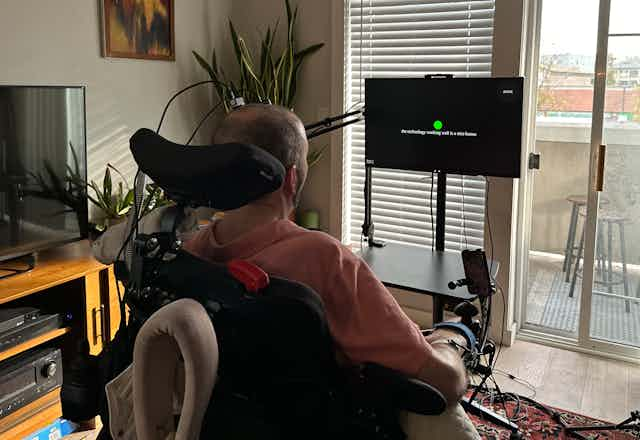A 45-year-old man in the United States, suffering from the debilitating muscle degeneration disease ALS, has regained his ability to “speak” thanks to a revolutionary brain-computer interface (BCI). This cutting-edge technology offers new hope to thousands of people who are unable to communicate due to conditions like ALS, also known as Lou Gehrig’s disease.
How the Brain-Computer Interface Works
Casey Harrell, the man at the center of this groundbreaking development, used the BCI to translate his brain signals into text, which was then converted into speech by a computer. The system achieved a remarkable 97% accuracy, making it the most precise speech neuroprosthesis ever developed.
Neurosurgeon David Brandman from the University of California, Davis, where the experiment took place, explained, “Our BCI technology helped a man with paralysis to communicate with friends, families, and caregivers. This is the most accurate speech neuroprosthesis ever reported.”
Harrell was able to use the system in both prompted and spontaneous conversations, with real-time speech decoding. According to a release from UC Davis on Wednesday, August 15, “The decoded words were displayed on a screen and read aloud in a voice that resembled Harrell’s pre-ALS speech.” The voice was generated using software trained on audio samples of his voice recorded before he developed ALS.
The Procedure: How Harrell Was Able to ‘Speak’ Again
Before the BCI was introduced, Harrell’s speech was difficult to understand, requiring others to interpret for him. However, in July 2023, sensors from the BCI were implanted directly into Harrell’s brain. Four microelectrode arrays were inserted into the region of his brain responsible for coordinating speech, allowing researchers to record brain activity from 256 cortical electrodes.
Neuroscientist Sergey Stavisky, part of the research team, explained, “We are essentially listening to the brain’s attempts to send commands to the muscles. We’re translating those patterns of brain activity into phonemes—like syllables or units of speech—and then into the words he’s trying to say.”
The brain signals captured by the BCI are then interpreted by machine-learning algorithms, allowing the system to accurately decode Harrell’s intended speech.
Why This Breakthrough Matters
This development represents a significant breakthrough in assistive technology for those living with ALS and similar conditions. Previous BCI systems often struggled with frequent word errors, making it challenging for users to be understood. Brandman emphasized, “Our objective was to develop a system that empowered someone to be understood whenever they wanted to speak.”
The impact of this technology was profound. “The first time we tried the system, he cried with joy as the words he was trying to say correctly appeared on-screen. We all did,” said Stavisky.
The Future of Communication for ALS Patients
“At this point, we can decode what Casey is trying to say correctly about 97% of the time,” Brandman added. “It has been immensely rewarding to see Casey regain his ability to speak with his family and friends through this technology,” said the study’s lead author, Nicholas Card.
Understanding ALS
ALS, or amyotrophic lateral sclerosis, is a progressive neurodegenerative disease that affects nerve cells responsible for controlling voluntary muscle movement. Over time, ALS leads to the weakening of muscles, making it difficult for patients to stand, walk, use their hands, and in some cases, speak.
This breakthrough in BCI technology offers renewed hope for individuals with ALS and other conditions that impair communication. By giving people like Casey Harrell the ability to “speak” again, this technology not only improves their quality of life but also represents a significant advancement in the field of neuroprosthetics.



